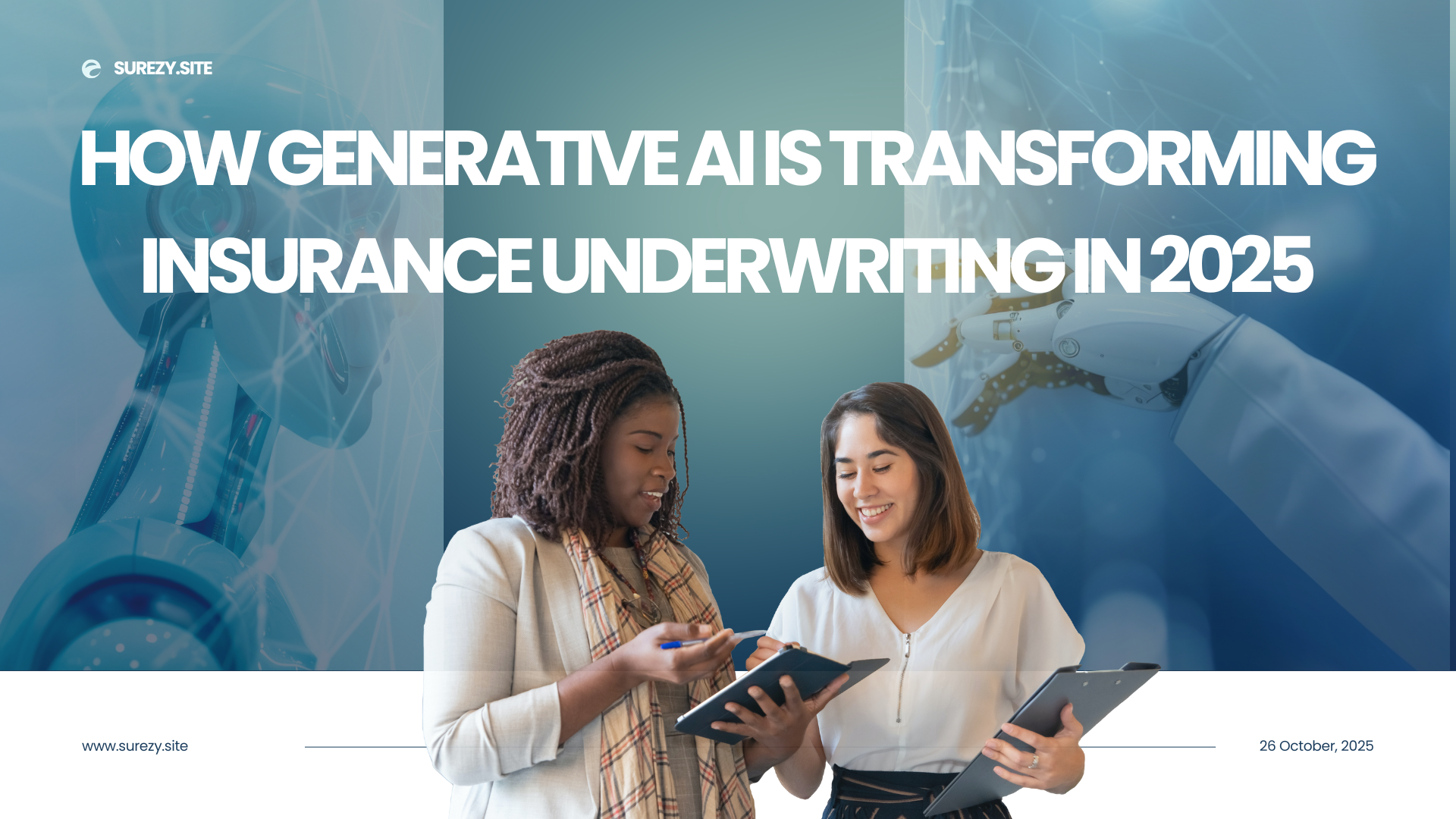The insurance industry has always relied on data, prediction, and human judgment. But in 2025, a new revolution is reshaping how insurers operate — Generative AI. Once confined to creating images and text, Generative AI is now being used to transform insurance underwriting, making risk assessment faster, more accurate, and customer-centric than ever before.
As insurance companies in the U.S., U.K., France, and across Europe adopt next-generation AI tools, the underwriting process is evolving from a manual, time-consuming task to a real-time, data-driven decision engine.

Generative AI refers to a branch of artificial intelligence that can create new data or predictions based on existing information. In simple terms, it doesn’t just analyze data — it learns from it, simulates outcomes, and produces intelligent suggestions.
In insurance, generative AI can:
- Analyze millions of data points instantly.
- Generate simulated customer profiles and risk patterns.
- Predict future claims or fraud scenarios.
- Recommend personalized coverage options.
This means underwriting — the process of evaluating risk and setting policy terms — is becoming smarter, faster, and more customized.
Before AI, underwriting was a highly manual process. Underwriters relied on paperwork, old data, and lengthy evaluation cycles. This created challenges such as:
- Limited data analysis: Human underwriters could only process a fraction of available data.
- Delays: Manual reviews led to slower approvals.
- Inconsistency: Different underwriters often made different decisions on similar profiles.
- Customer dissatisfaction: Long waiting times frustrated policy applicants.
Generative AI is now solving these issues at scale.
Generative AI models can process structured and unstructured data — from social media to IoT devices — to deliver instant risk profiles.
For example, life and health insurers can now analyze wearables, fitness apps, and genetic information to assess risk more accurately.
In 2025, many insurance leaders, including those in the U.S. and U.K., use generative AI to auto-underwrite up to 80% of cases with minimal human intervention.
Every customer is unique — and generative AI finally allows insurers to treat them that way.
By learning from individual data, the AI system can generate custom policy terms, premiums, and add-ons based on risk appetite and behavior.
For instance, if a customer’s driving data shows safe patterns, AI can generate lower auto-insurance premiums automatically.
Fraudulent claims cost the insurance sector billions annually. Generative AI is changing this by simulating fraudulent patterns and flagging anomalies in real time.
AI models can generate fake scenarios to train themselves, improving accuracy in identifying real-world fraud attempts.
This self-learning mechanism makes fraud detection more robust, protecting both insurers and honest policyholders.
Generative AI-powered chatbots and virtual assistants now help customers complete applications, verify identity, and submit documents instantly.
These tools not only reduce onboarding time but also enhance user satisfaction — a key metric for AdSense-approved websites that value engagement and trust.
In Europe and the U.S., regulators are enforcing transparency in AI-based decision-making. Generative AI tools are now built with explainable AI (XAI) frameworks, allowing underwriters to understand and justify every automated decision.
This ensures compliance with GDPR, AI Act (EU), and similar frameworks — making AI adoption both ethical and compliant.
According to industry analysts, companies using Generative AI in underwriting have seen:
- 60–70% faster processing times
- Up to 40% lower operational costs
- Higher customer satisfaction rates
- Fewer claim disputes
For insurers, that means more profit and scalability. For customers, it means faster approvals and fairer premiums.
A European insurer recently integrated a Generative AI underwriting engine that combined health records, wearable data, and lifestyle patterns.
The result: policy issuance time dropped from 5 days to under 10 minutes, and claim accuracy improved by 35%.
Such results are setting the standard for the insurance industry in 2025 and beyond.
Despite its power, Generative AI isn’t perfect. Concerns about data privacy, bias, and over-automation remain.
Experts agree that human oversight is essential — AI should assist underwriters, not replace them.
The best results come from AI-human collaboration, where underwriters use AI insights while ensuring fairness and empathy in final decisions.
Looking ahead, Generative AI will continue to evolve in underwriting. Here’s what’s coming next:
- AI-as-a-Service models for small insurers.
- Blockchain integration for transparent data verification.
- Real-time pricing models based on user behavior.
- Cross-industry data sharing to enhance risk predictions.
By 2026, underwriting could become almost entirely automated, data-driven, and predictive — turning insurance into a proactive service rather than a reactive one.
Generative AI is no longer a futuristic idea — it’s the core engine of modern underwriting.
From real-time risk analysis to personalized policies and fraud detection, AI is helping insurers across the U.S., U.K., France, and Europe serve customers faster, fairer, and smarter.
For insurers, the message is clear: adopt Generative AI or fall behind.
For consumers, the change means better coverage, quicker approvals, and more trust.
The future of insurance underwriting has arrived — and it’s powered by Generative AI.